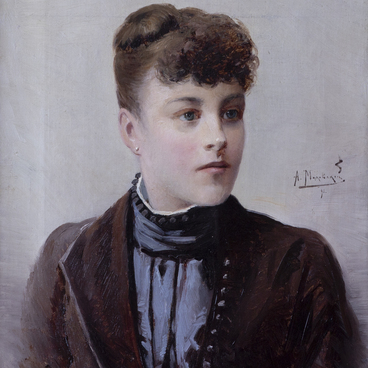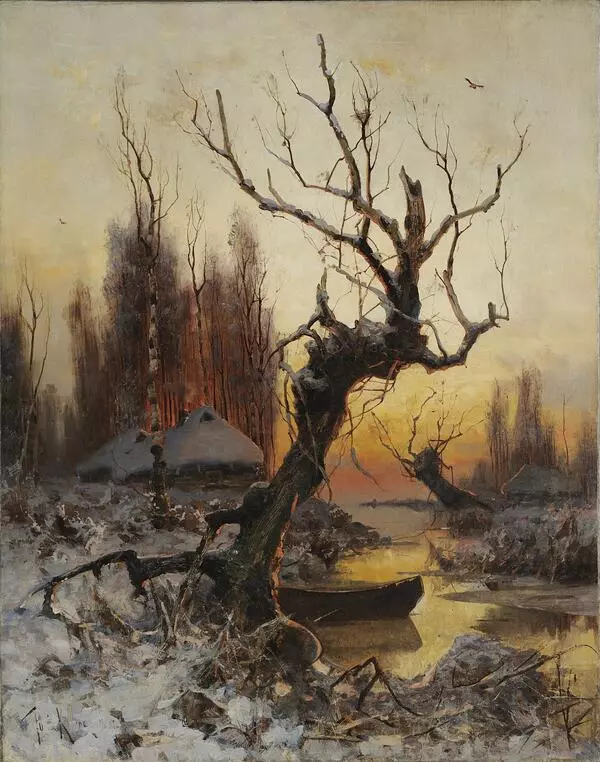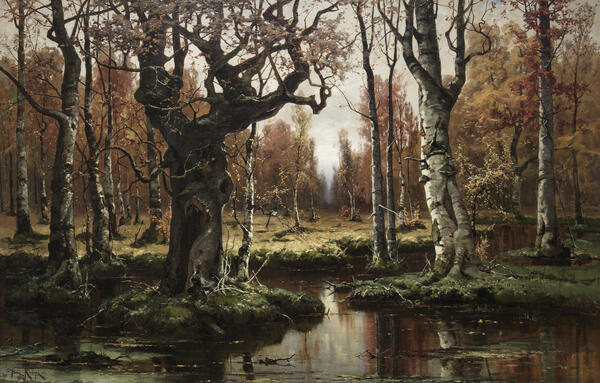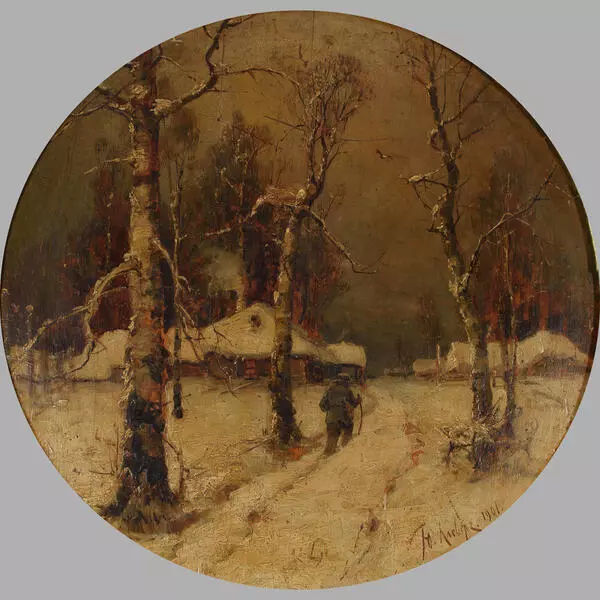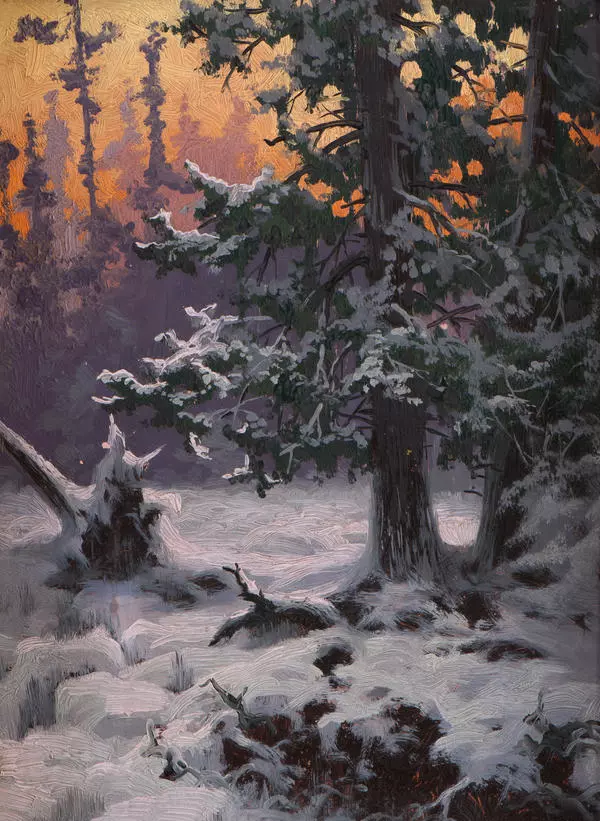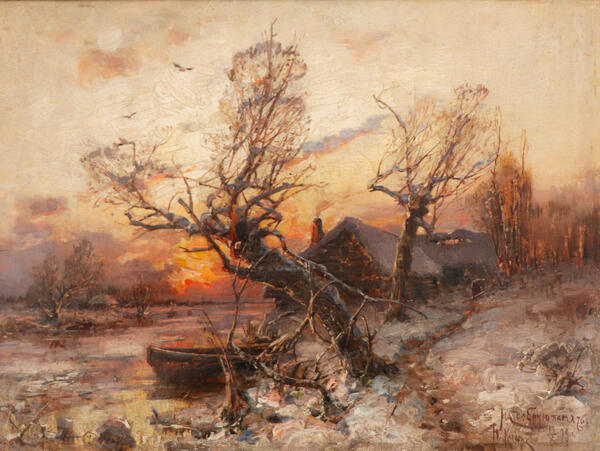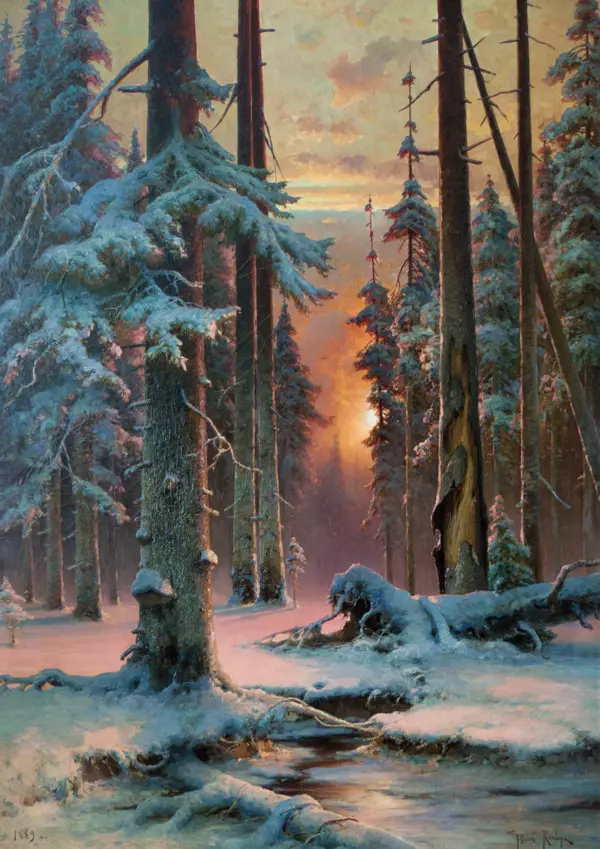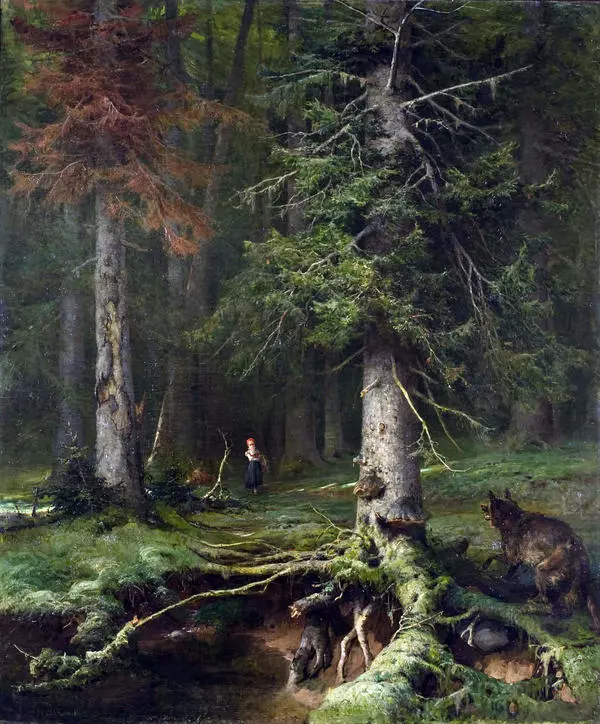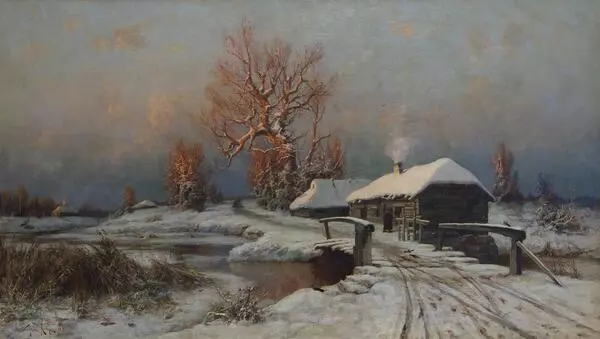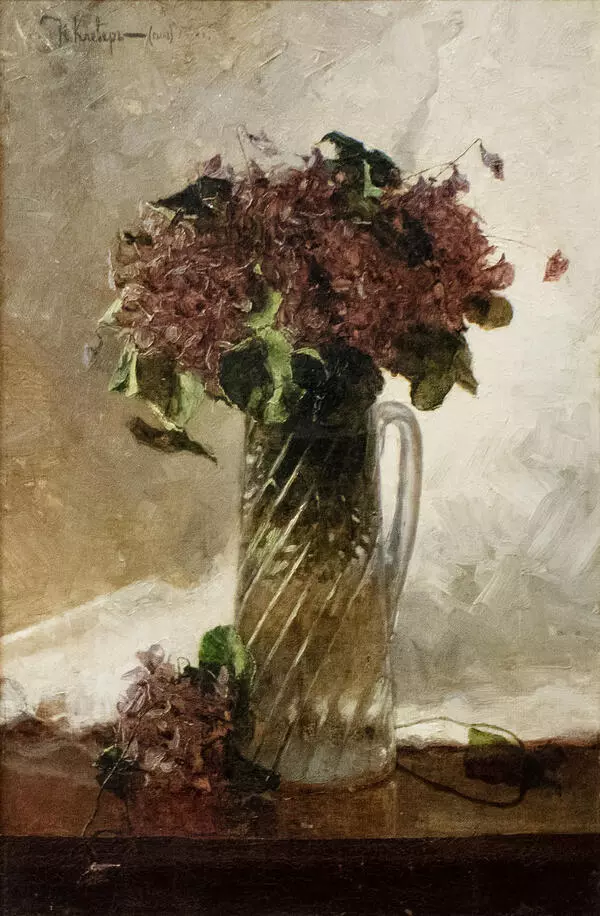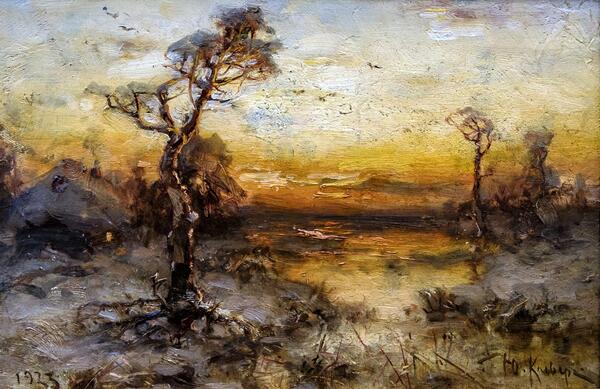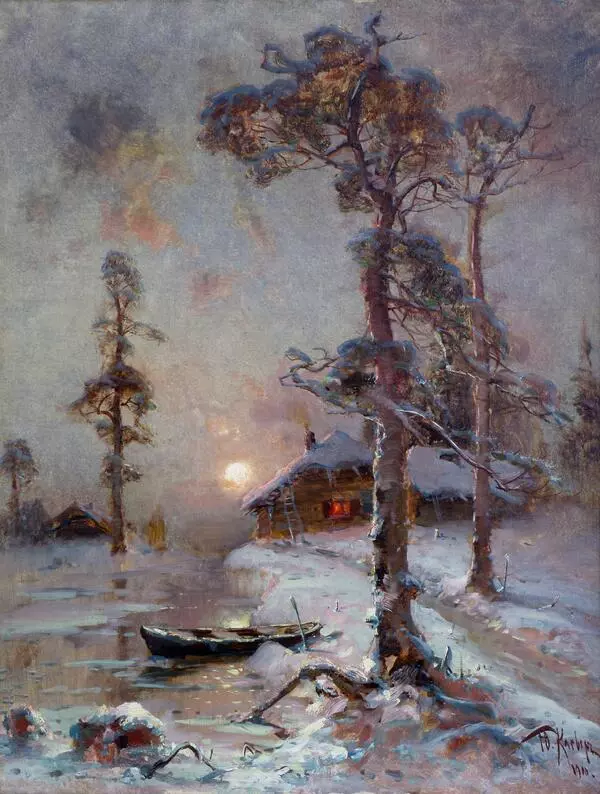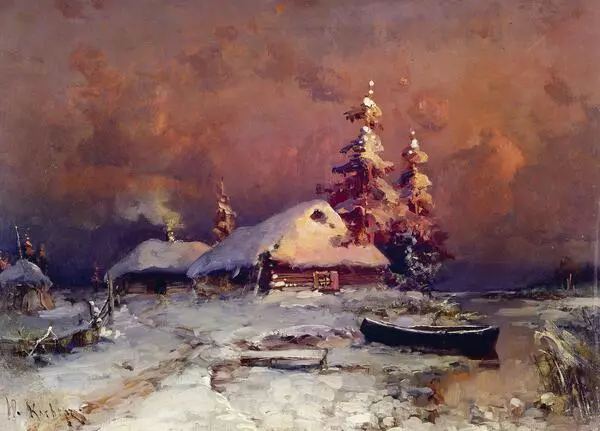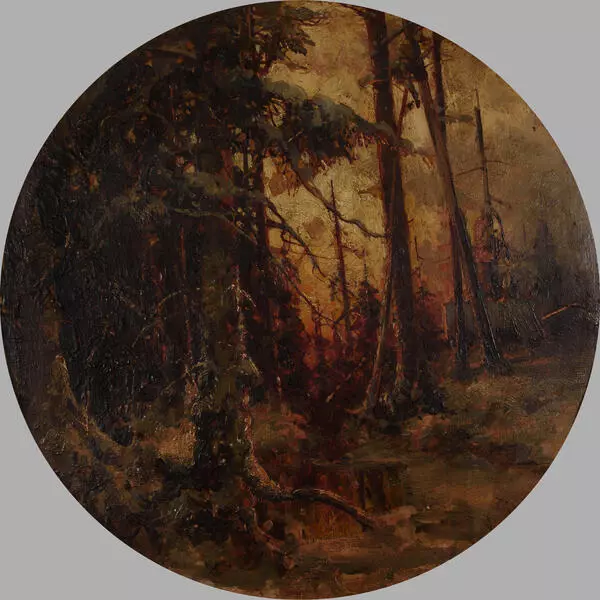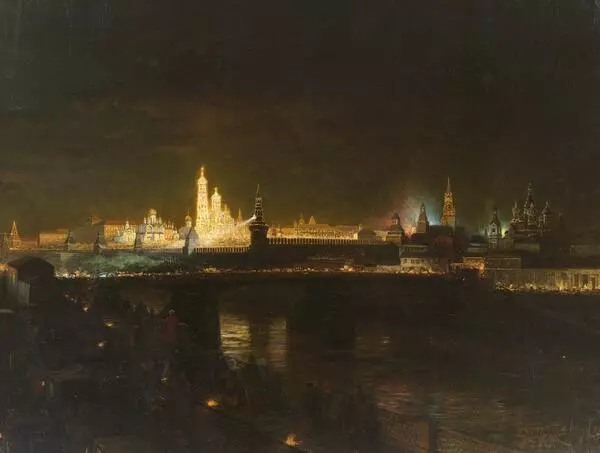Julius Yulievich Klever was a famous Russian artist and landscape painter. He was born in Dorpat (called Tartu since 1919) in 1850, studied at the St. Petersburg Academy of Arts, and at the age of 28 received the title of academician. The artist borrowed the motifs of landscapes from the nature of the Baltic region. He liked to paint cloudy rainy days, severe frosts, sunny sunrises and sunsets.
Julius Klever is considered a recognized master of light effects. The artist liked to paint romantic and harsh nature. The most surprising thing is that no one taught him this technique of painting. His enthusiasm for the external beauty of the landscape and exaggerated color effects made his works look similar to the academic salon art of the second half of the 19th century.
Julius Yulievich Klever was considered the favorite painter of the imperial family, for wealthy people it was considered bad form not to have his paintings at home. Many artists were fascinated by the winter season, when nature slumbers, rests and gains strength under a white cover. Julius Klever, who created many winter landscapes, was no exception.
This time of the year especially attracted the artist — he loved to find unexplored places and colorfully render them on canvas. His winter immerses the viewer into a frosty fairy tale, helps to fantasize and imagine oneself as a hero of a snowy landscape with centuries-old pine trees and frozen ponds. The favorite characters of Julius Klever’s paintings are old wooden huts, which are comfortably nestled in the middle of the forest.
The “Winter Evening” from the Lipetsk Painting Collection was painted when the artist was 44 years old. The canvas is permeated with the pink light of the last dim ray of the descending winter sun. The light froze at the top of the tree, whitened the snow-covered roof of the house, and the cold day, snowdrifts, and the path trodden by the lady of the house, look warm.
In Soviet times, Julius Yulievich Klever was called “too bourgeois an artist”, because of which he was undeservedly forgotten. The painting entered the local history museum in 1919; it was requisitioned from the inhabitants of the Lipetsk district.
Julius Klever is considered a recognized master of light effects. The artist liked to paint romantic and harsh nature. The most surprising thing is that no one taught him this technique of painting. His enthusiasm for the external beauty of the landscape and exaggerated color effects made his works look similar to the academic salon art of the second half of the 19th century.
Julius Yulievich Klever was considered the favorite painter of the imperial family, for wealthy people it was considered bad form not to have his paintings at home. Many artists were fascinated by the winter season, when nature slumbers, rests and gains strength under a white cover. Julius Klever, who created many winter landscapes, was no exception.
This time of the year especially attracted the artist — he loved to find unexplored places and colorfully render them on canvas. His winter immerses the viewer into a frosty fairy tale, helps to fantasize and imagine oneself as a hero of a snowy landscape with centuries-old pine trees and frozen ponds. The favorite characters of Julius Klever’s paintings are old wooden huts, which are comfortably nestled in the middle of the forest.
The “Winter Evening” from the Lipetsk Painting Collection was painted when the artist was 44 years old. The canvas is permeated with the pink light of the last dim ray of the descending winter sun. The light froze at the top of the tree, whitened the snow-covered roof of the house, and the cold day, snowdrifts, and the path trodden by the lady of the house, look warm.
In Soviet times, Julius Yulievich Klever was called “too bourgeois an artist”, because of which he was undeservedly forgotten. The painting entered the local history museum in 1919; it was requisitioned from the inhabitants of the Lipetsk district.


